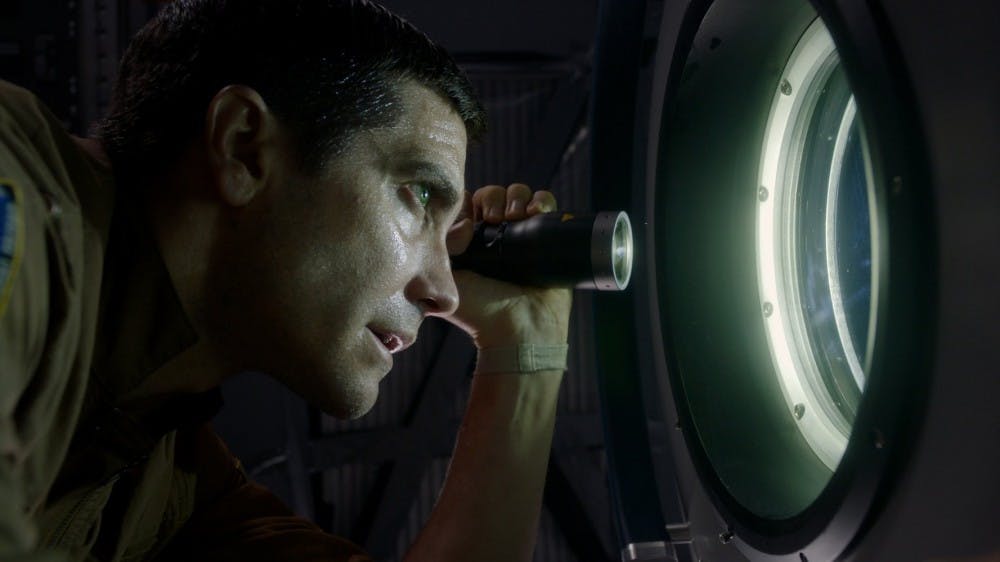Few people on Earth have experienced what lies beyond the Earth's atmosphere — and even then, the furthest they may have gone is the moon. The rest, for now, is left to the studies of astronomers and the imaginations of the world’s artists, such as in Daniel Espinosa’s, “Life,” and Andy Weir’s, “The Martian.”
“Life,” star Jake Gyllenhaal, and “The Martian,” author Andy Weir discussed in interviews the various things they did to ensure their science accuracy in the mediums they portrayed, as ASU faculty weighed in on how close these fictions come to reality.
The upcoming picture, “Life,” staring Gyllenhaal, Ryan Reynolds and Rebecca Ferguson, tells the tale of astronauts who discover the first proof of life beyond Earth and must act when its existence threatens Earth.
The picture, hitting theaters Friday, is a fun sci-fi thriller when it's suspenseful and even when it's more predictable. A surprising amount of humor at the beginning, a twist at its end and a great cast provide plenty of incentive to buy a ticket, but remains just out of reach from being a new, fresh experience.
Gyllenhaal’s character is the doctor responsible for the health of the men and women on board the station, whose position becomes highly valued when its members are threatened by an alien life form that grows at an alarming rate.
He said he and his fellow cast mates went through special "wire training" to stay upright while suspended by wires as their characters throughout the movie remain in zero gravity.
“We had a movement coach studying footage from a lot of the people on the International Space Station,” Gyllenhaal said. “We had a preparation period. I really had the shortest amount — I had about two weeks of physical prep —because I was sort of the last one in.”
He said the short amount of prep time didn’t bother him as his character faced similar issues in the film.
“For me not being as confident and sort of like an outsider is what the character feels like,” Gyllenhaal said. “So all those things worked for me.”
The reason for his character’s lack of confidence on board is that he has the least amount of experience in space out of the crew. As such, Gyllenhaal worked with doctors instead of astronauts to get into character.
“We worked with a number of people,” he said. “Everybody specifically to what they did. I happened to play a doctor, but I am playing a doctor with very little experience in space.”
Weir’s, “The Martian,” deals with similar themes as "Life," as both involve life on Mars. Weir described the care he took in maintaining scientific accuracy while he was writing about a human living on another planet.
“When I was publishing it to my website, I had a small fanbase of hardcore nerds like myself,” Weir said in an email interview. “I was writing for those fans. These are very technical people with deep scientific knowledge, so I knew that their suspension of disbelief relied on everything being as scientifically accurate as possible.”
When his serial-turned-novel gained so much attention that it made the bestseller list on Amazon, a book deal soon followed with the publishing company Crown, and then a movie option in the same week.
When the film was being made, Weir said, he didn’t have much input, but it didn’t matter.
“In the end, the film is very true to the book, so I’m happy,” Weir said.
However, he added there is one scene that is in both the novel and film that he took certain creative liberties on.
“The biggest handwave is the sandstorm at the beginning,” Weir said. “The atmosphere of Mars is only about 1/200th the density of Earth’s. It does get 150km/h windstorms, but the inertia from the thin atmosphere is so small it would feel like a gentle breeze … I knew this at the time I wrote it. I had an alternate beginning worked out … but it just wasn’t as cool. The Martian is a man-vs-nature story and I wanted nature to get the first punch in.”
While films like “The Martian” and “Gravity” present ideas that seem plausible to the casual viewer, the plots of these science fiction stories are still fiction.
ASU faculty professor Michael Green studies science fiction and teaches a class on science fiction cinema and cultural theory. He said he belives these films aren't necessarily the most accurate films, but they can still teach important lessons.
"I like to look at the way science fiction allegorizes contemporary events," he said. "Where we're headed as a species and the kinds of ways we can get ourselves in trouble if we're not careful."
As far as the accuracy of the current generation of sci-fi media, Green said some pieces of film and literature stand up to the scrutiny he and his class subject them to.
“I don’t personally know what kind of research goes into it,” Green said. “But I expect that for movies that are not set very far in the future, the research tends to be a little more thorough because it’s easier to check on the reality of the technology.”
He said the fascination with recent space films in pop culture shows people are interested in reaching the stars and interested in the research that will bring them there.
"It's an interesting question why 'Gravity' and 'The Martian' have been popular because we really haven't had a space program to speak of, in decades," Green said. "Maybe people are craving more of a space program."
Reach the reporter at Owen.Baldner@asu.edu or follow @baldnerwin on Twitter.
Like State Press Magazine on Facebook and follow @statepressmag on Twitter.




